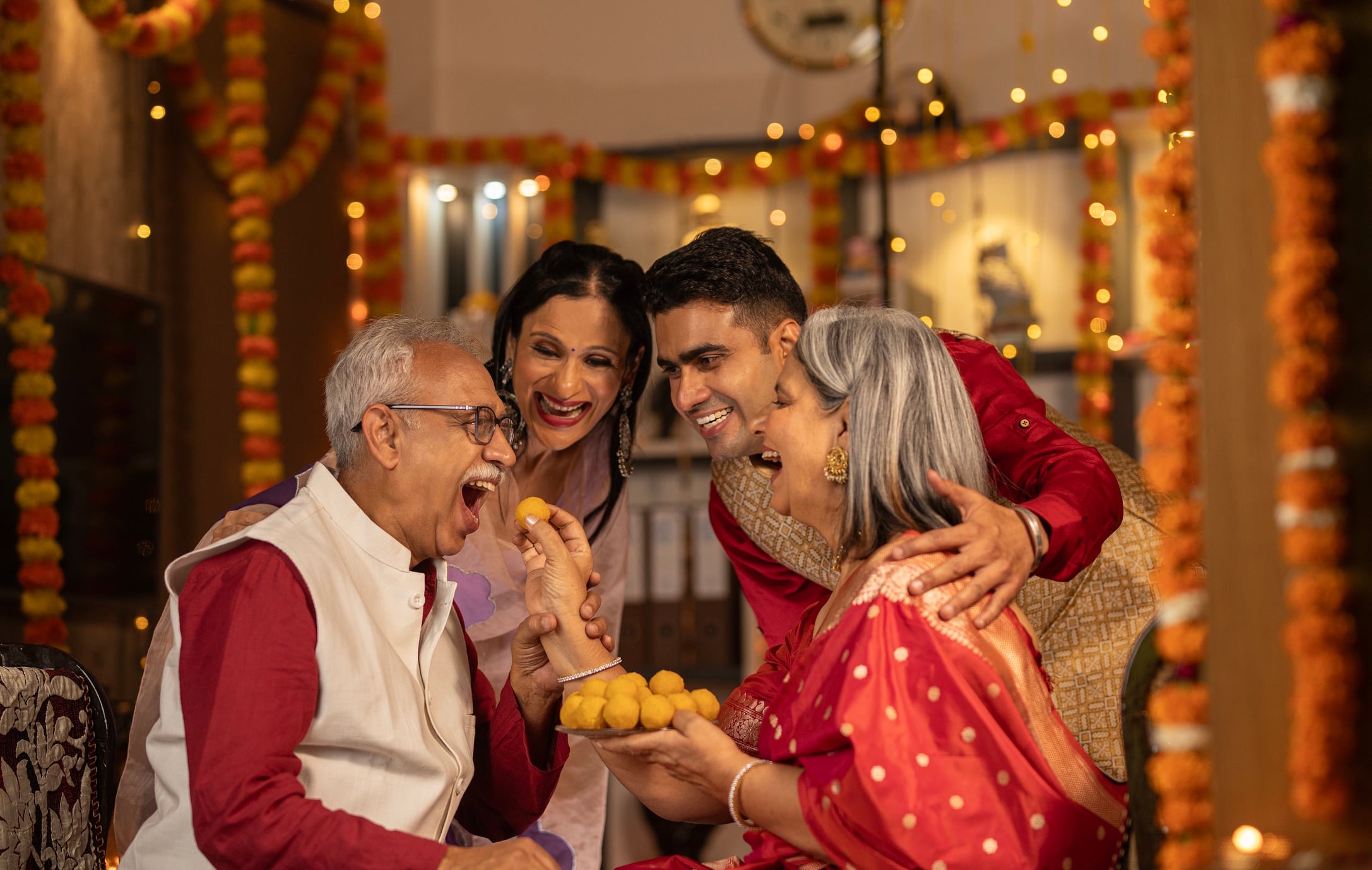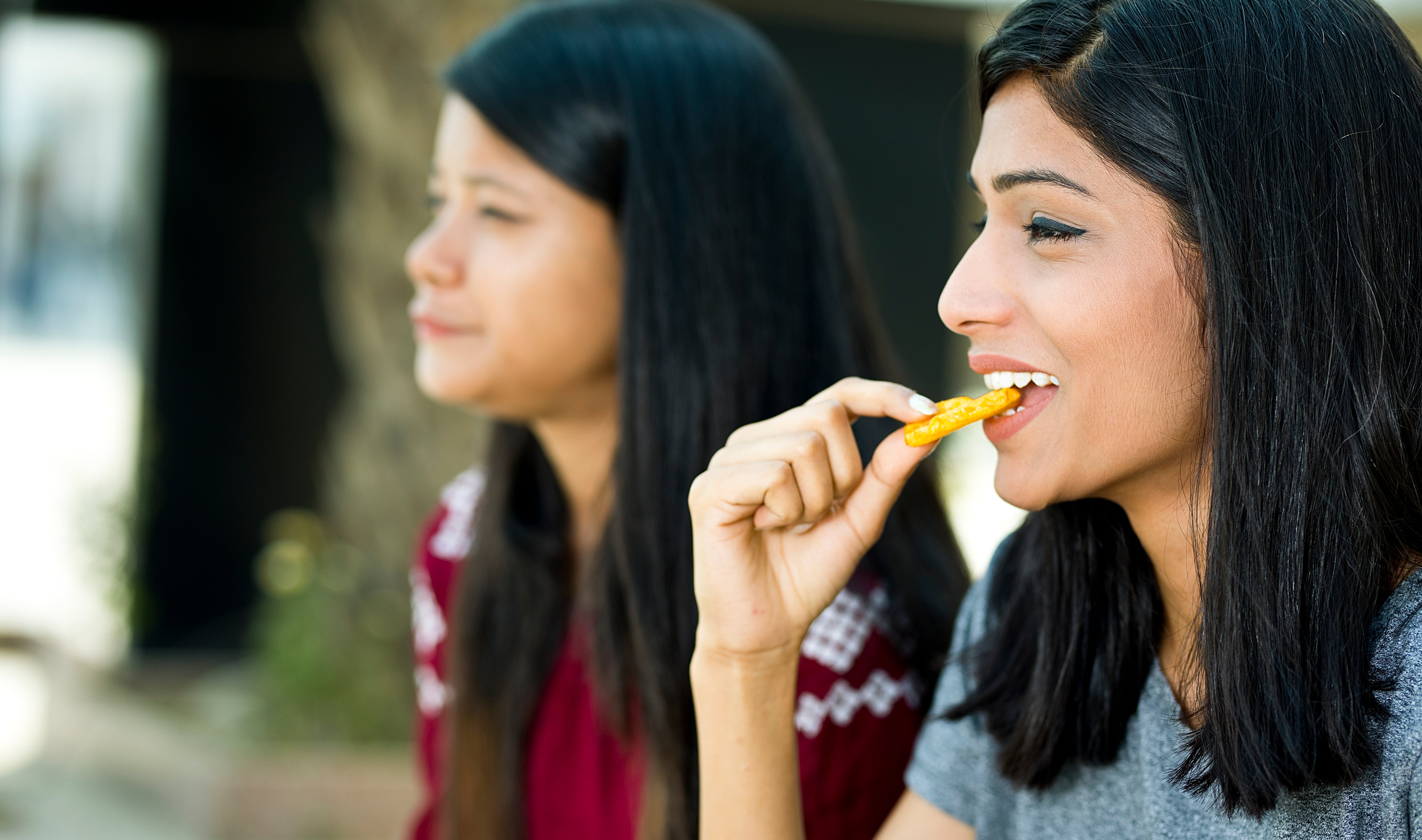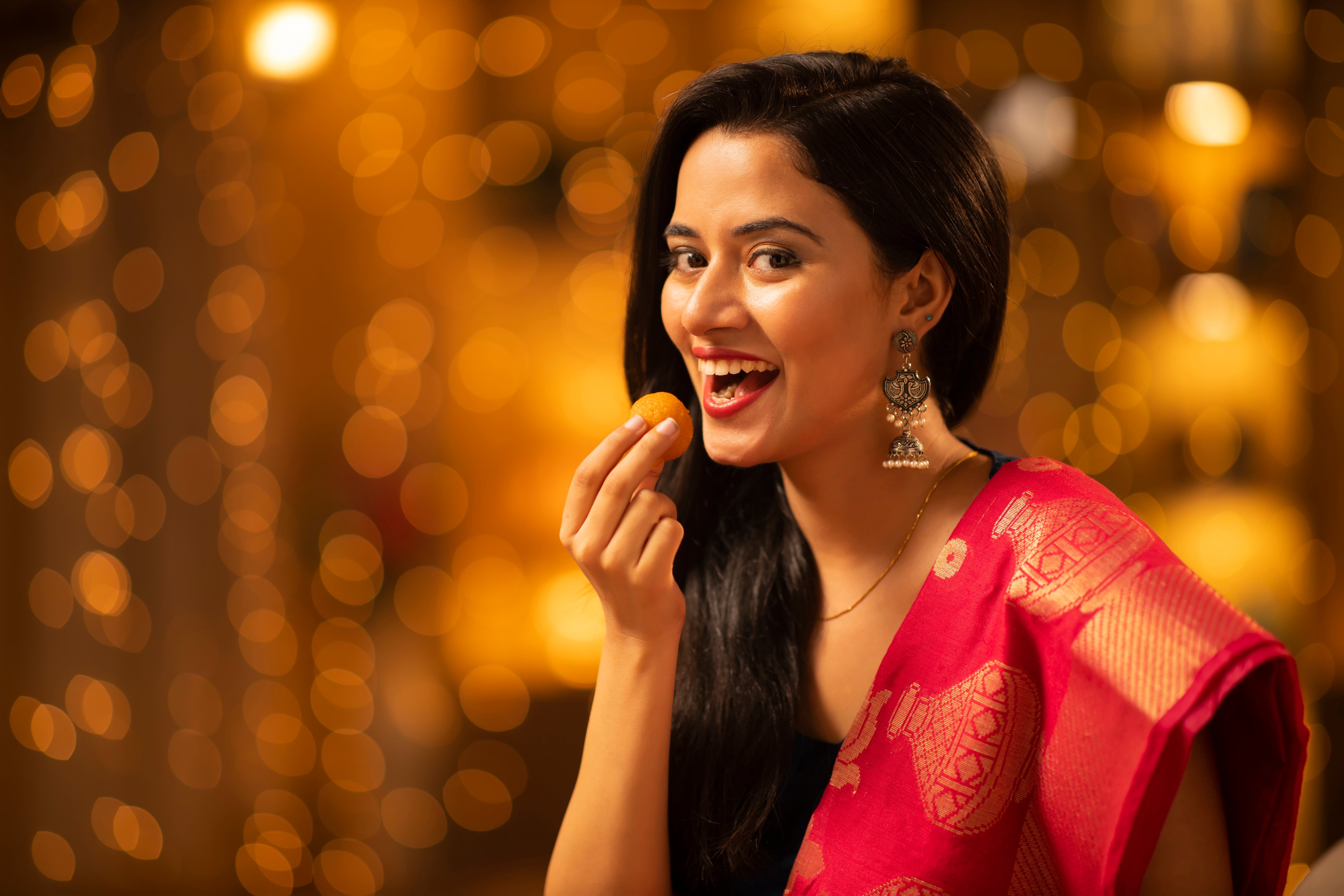Key takeaways:
- Diwali is now a $57 billion retail season in India, with mithai and gifting sales surging as the festival rivals Christmas in its commercial scale.
- Haldiram’s is leading the charge, blending 80 years of tradition with modern innovation through vegan, gluten-free and premium gifting lines tailored to UK consumers.
- Global appetite for Indian sweets is rising, as mithai evolves from a festival treat into a year-round indulgence embraced by both diaspora and mainstream shoppers.
Each October, India is awash in perfumes of sugar and saffron. Shopfronts glitter, families elbow their way to the sweet counters and fireworks crack long into the night.
This is Diwali – the Festival of Lights – a five-day celebration of good over evil, light over darkness and in recent decades, serious consumer spending. Once a matter of ritual and home cooking, Diwali has become one of the biggest commercial seasons on the planet. From Delhi to Derby, the festival now rivals Christmas in its ability to drive sales – especially for confectionery and snacks.
According to the Confederation of All India Traders (CAIT), Diwali sales this year are expected to touch ₹4.75 lakh crore ($57 billion) across India – an all-time record. Sweets and gifting items account for a significant share of that total. Meanwhile, the organized packaged-sweets market – long dominated by heritage names such as Haldiram’s, Bikanervala and Bikaji – is worth around $751 million and could hit $3 billion by 2032, growing more than 16% a year, according to the Trade Promotion Council of India (TPCI). The small halwais (typically family-run sweet-makers) still matter, but industrial-scale production has transformed mithai into a sophisticated export business.
And the glow is spreading far beyond India. In the UK, Diwali has broken out of the diaspora to become a national event, lighting up Leicester, Birmingham and London with fireworks, markets and street food. Credence Research values the UK’s ethnic-food sector at almost $9.5 billion, rising more than 7% annually, while the wider confectionery category – now worth about $17 billion – continues to expand at roughly 5% a year. For Indian sweet brands, that’s a growing window of opportunity.
Few people have a closer view of that shift than Rhea Agarwal, director of Business Development UK & EU at Haldiram’s, the third-generation family company that has been making sweets for more than 80 years. Part of the Haldiram’s Group, which has a global turnover of around £1.5 billion ($1.9 billion), the brand employs more than 15,000 people worldwide and operates 15 manufacturing facilities across India, along with a 10,000-square-foot production and distribution hub in the UK.
“Diwali and mithai are inseparable; it’s not just about taste, it’s about emotion, memory and celebration,” Agarwal says. “For the South Asian community, Haldiram’s is a household name – there’s nostalgia and trust. But now we’re seeing new audiences, too. People without any Indian background are discovering mithai as a premium gift or something different to serve at gatherings. It’s gone from familiar comfort to shared curiosity.”
Sweet spot, modern market
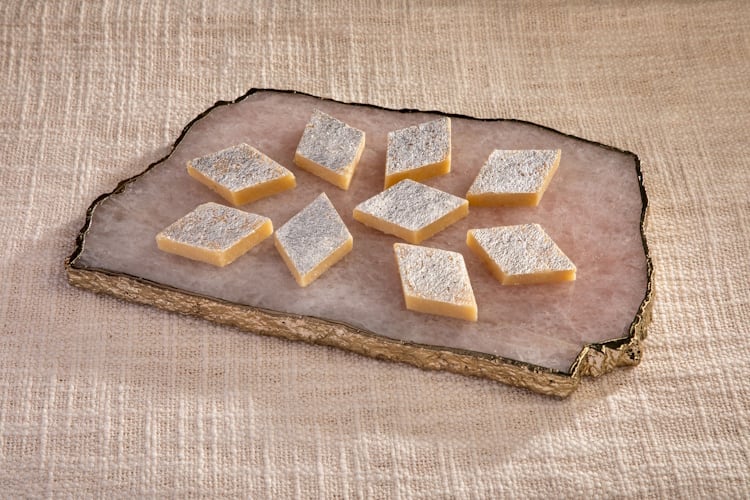
In India, Diwali can account for nearly a third of a sweet maker’s annual sales. “It’s the time when our shelves empty faster than any other point in the year,” Agarwal says. “People aren’t just buying; they’re celebrating through food.”
In Britain, the picture looks different but the principle holds. “Independent retailers still give us reach, especially in areas with strong South Asian populations,” she explains. “But online is growing the fastest. During Diwali, web traffic spikes – people order early, send gifts directly and look for limited-edition assortments you can’t find in stores.”
That online visibility has become a cornerstone of Haldiram’s UK strategy. “E-commerce lets us show the full range – including premium gift boxes and vegetarian certification,” she says. “It also helps us reach first-time customers who might never walk into an Asian grocer but find us via Google or Instagram.”
Packaging, she adds, “does a lot of heavy lifting.
“Good packaging doesn’t just protect the product; it signals quality. Especially in gifting – presentation matters. Every product we sell in the UK is vegetarian and certified by the Vegetarian Society, which reassures both retailers and mainstream shoppers.”
Corporate gifting, meanwhile, is surging. “Companies are looking for gifts that feel personal and distinctive,” Agarwal says. “A mithai box ticks those boxes – it’s colorful, joyful and memorable. It connects across cultures.”
Diwali 2025
Diwali falls on October 20 this year, marking the start of five days of family gatherings, fireworks and feasting across India and beyond. Markets from Mumbai to Manchester are already gearing up for the celebrations, with retailers reporting early demand for sweets, savories and gifting hampers.
In the UK, major cities including Leicester, London and Birmingham will host Diwali light festivals featuring street food markets, live performances and artisan stalls. London's Trafalgar Square celebration will take place on Sunday, October 12 - held earlier to allow more families and visitors to take part, while Leicester’s Diwali switch-on last year drew more than 40,000 visitors and featured dozens of Indian snack and confectionery brands.
With growing mainstream appeal and strong corporate participation, 2025’s Diwali season is expected to be one of the busiest yet for mithai and snack makers – a glowing opportunity for brands blending heritage with modern indulgence.
Innovation, without losing soul
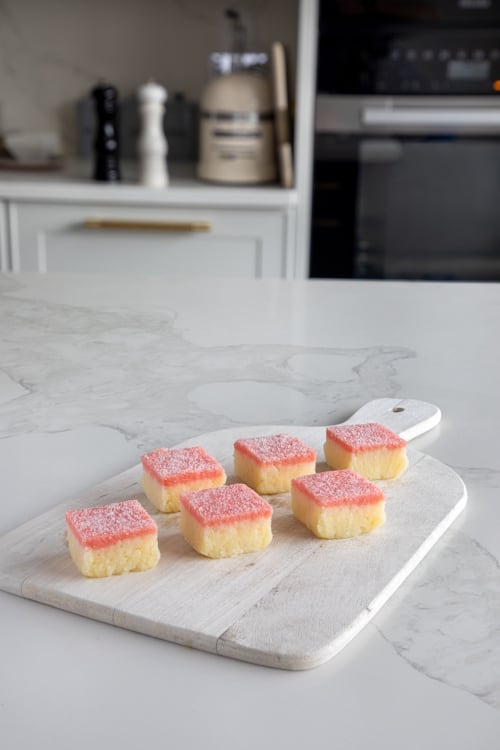
Haldiram’s success, Agarwal insists, depends on striking the right balance between tradition and evolution. “It’s about protecting the soul of the brand while staying relevant,” she says. “I always tell our team: stick to what you’re great at and keep perfecting it – but don’t ignore the shifts in behavior. Tradition is non-negotiable, but innovation is essential.”
That philosophy has shaped the company’s UK launches. “Veganism and gluten-free diets are major priorities for consumers here,” she says. “So we’ve built a full gluten-free line and vegan curries without compromising authenticity. We’re selective about trends; some desserts go viral, then disappear. We evolve where it makes sense for our brand identity and for long-term demand, not for social-media likes.”
This restraint has paid off. With the UK healthy snacks market forecast to grow 5.1% a year through 2030 (Grand View Research), Haldiram’s now sits comfortably between indulgence and better-for-you snacking. “Sweets, whether Indian or not, are indulgent – and that’s fine,” Agarwal says. “But how people indulge is changing. Smaller portions, fewer additives, more transparency. We can deliver that without losing the magic of mithai.”
The same mindset guides the company’s savory and frozen categories. “Those lines allow us to talk to both indulgence seekers and health-conscious consumers,” she says. “It’s not about pretending mithai are healthy – it’s about offering variety and balance across the range.”
When asked about fleeting food crazes, Agarwal is pragmatic. “Pistachio kunafa looks great on TikTok,” she says, “but we’re not in the meme business. Our brand has lasted eight decades because we evolve thoughtfully.”
From festival box to everyday dessert
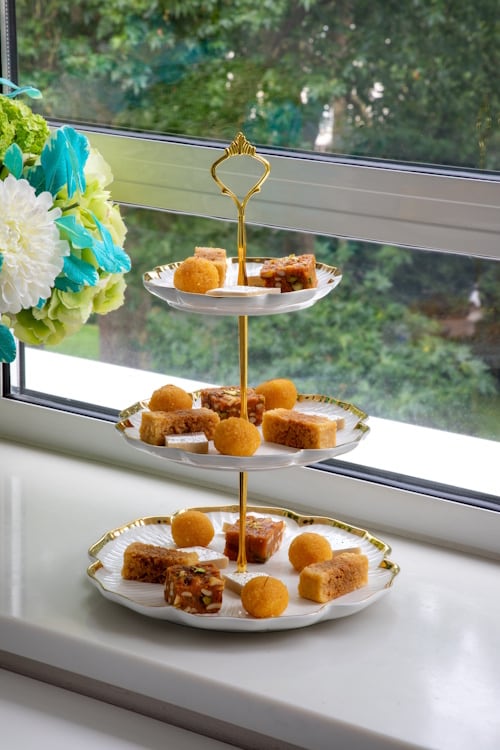
While Diwali remains the biggest sales spike of the year, Agarwal says mithai sales don’t collapse once the lamps are packed away. “Yes, the rush settles, but there’s year-round appetite now,” she says. “New SKUs, smaller packs, restaurant tie-ins – all of that helps keep mithai moving.”
Gulab jamun, she points out, works just as well with ice cream as it does with rabri (a condensed milk pudding). “That versatility makes it perfect for modern menus. Chefs love it because it fits both East and West.”
That adaptability has helped push Indian sweets into the mainstream. “They’re not just festival food anymore,” Agarwal says. “They’re desserts with character. We want to make mithai something you reach for outside Diwali, too.”
To keep that visibility high, Haldiram’s is investing in digital storytelling and partnerships. “We’re collaborating with influencers, working on PR, building brand awareness beyond the festive window,” she says. “Retail expansion is important, but digital engagement is where we’re really growing.”
Behind the scenes, logistics are evolving, too. “We’ve expanded our UK fulfillment and shipping to handle bulk and corporate orders,” she says. “During Diwali, demand goes through the roof, but we now have the infrastructure to deliver nationwide. It’s changed how quickly and confidently we can serve customers.”
As Diwali cements itself on calendars from Europe to North America, mithai is becoming more than a seasonal indulgence. “The Indian diaspora is over 32 million people now,” Agarwal notes. “Add to that the growing curiosity for global flavors and you have a powerful driver for Indian confectionery.”
For Agarwal, the meaning of Diwali still anchors everything. “Whether you grew up with the festival or you’re discovering it for the first time, the feeling’s universal – connection, generosity, joy,” she says. “That’s what keeps the market glowing. People want a taste of that feeling.”
Haldiram’s brings Diwali to Southall
Haldiram’s is marking Diwali 2025 with a local celebration outside its UK factory in Southall. From October 10-19, the company will operate a pop-up stall offering freshly made mithai sold by weight – a first for its UK arm and a nod to traditional Indian sweet shops. The limited run stall will also feature namkeen (savory snacks) and frozen favorites, giving visitors a direct taste of the brand’s wider portfolio.
“We wanted to create something informal and community-driven – a space where people can experience the freshness and generosity that define Diwali,” says Agarwal.
Open daily from 10am to 10pm outside the company’s factory at Unit 9C, Beaver Industrial Park, Brent Road, Southall.

